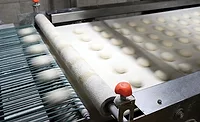Editor's Note
2019 Construction Survey Highlights Good and Bad in Food & Beverage Industry
Processors are investing in new building and renovations, but labor shortage creates difficulties

Photo courtesy of Getty Images
As is the case with every June issue, our cover story this month is the annual Construction Survey.
What I like about the Construction Survey is that it gives us some insights that we don’t get to see too much in the rest of our reporting throughout the year. While we do some coverage of construction or renovations, especially in the context of topics such as sustainability, most of our coverage is focused on engineering and operations. That means we can form a pretty accurate perspective on what’s going on inside the plant, but construction and renovations are huge capital investments that we don’t get to cover much on a month-to-month basis.
But once a year we get a good look at what’s going on with those capital investments, and it gives us a useful shorthand for gauging how things are going. This year, the big takeaways are that processors are spending money to build or renovate plants, but the ongoing shortage of skilled labor is also affecting those projects.
I don’t think it’s a big surprise to anyone in this industry that good skilled labor is increasingly hard to find. As you’ll read in the cover story, that shortage is hitting the construction trades hard as well.
That gives me a little bit of pause. Margins in the food industry are tight to begin with, and if the cost of labor for both operations and construction keeps going up, then that puts processors in a very tough spot. Cost pressure is coming from everywhere, and it’s a hard sell to convince your customers and, ultimately, consumers that they should pay more because your costs are going up.
So I wonder if this year’s Construction Survey is a bit of a two-edged sword. It’s a good sign that companies are making capital investments in their plants, whether it’s new construction or renovations. And if you look at the last several surveys, dating back to the financial crash of a decade ago, then the trend is definitely positive overall.
But if labor is continuing to drive up the cost of every aspect of food production, from workers in the plant to construction to equipment, then eventually something has to give. I would imagine that the question that keeps a lot of you up at night is what it will be that gives, and when that will happen.
This isn’t meant to be doom and gloom because there are a lot of good things going on in the industry right now, even with the rising cost of labor. And I know that there are a lot of companies from the entire spectrum of food production that are investing a lot of resources into finding better, more efficient, less labor-intensive ways of operating.
In this industry—and many others, to be fair—we have to take the bad with the good. Sometimes the bad pushes us into finding solutions that end up being better than the status quo in the long run, and I’m pretty confident that will be the case in this instance as well.
But long-run solutions don’t get plants built this year, and they don’t get food produced this week. The good news is that food processors are aware of that and are taking steps to mitigate the short-term pain as much as possible.
Will it be enough? Only time will tell.
Looking for a reprint of this article?
From high-res PDFs to custom plaques, order your copy today!







